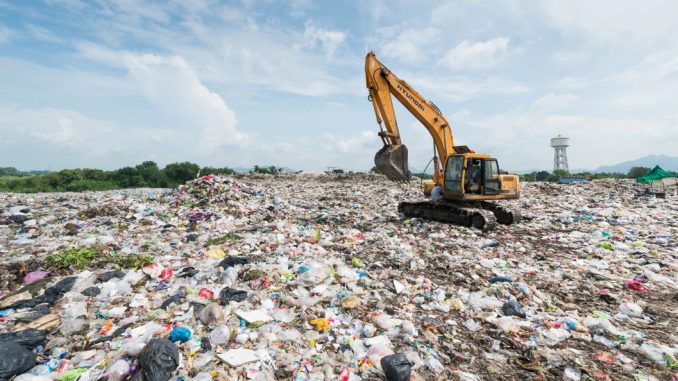
One of the biggest problems associated with landfill is leachate, the process by which water becomes toxic and can cause serious pollution if allowed to escape into the environment.
Landfill sites must therefore abide by strict regulations governing the collection, storage, treatment and disposal of leachate in order to prevent it contaminating soil, groundwater or surface water.
Pipes have a major role to play in the management of leachate at landfill sites, helping to protect the environment from the release of harmful substances.
What is leachate?
Leachate is the term used to describe any fluid which has been produced by the act of leaching, whereby the fluid dissolves environmentally harmful substances to become toxic.
In landfill, leachate is formed when rainwater becomes contaminated with chemicals, waste and other by-products of decomposing rubbish.
This occurs as water passes through the land where waste has been buried as part of the landfill process, absorbing the harmful elements.
Common pollutants found in leachate
The most common pollutants found in leachate are chloride, nickel, ammonia and other forms of nitrogen including ammoniacal nitrogen.
Decomposition of plant, animal and human waste produces ammonia. Many household and industrial cleaning products including disinfectants also contain ammonia. Biological processes are most commonly used for the treatment of ammonia.
Rotting rubbish in landfill also releases significant amounts of gasses, such as methane. Some landfill sites collect these gasses and use them to generate electricity.
How to prevent leachate and pollution at landfill
There are preventative steps that can be taken to prevent leachate forming and polluting the environment, starting with the location of landfill sites.
Reducing the amount of water that waste comes into contact with is done by locating landfill sites in dry areas away from natural bodies of water.
Landfill sites also have complex water management and drainage systems designed to protect during extreme weather or other unexpected events.
If a landfill site was to become flooded for example, then huge amounts of water would be turned into leachate with damaging consequences.
In terms of rainfall, there is not much that landfill sites can do to prevent the heavens opening. Good drainage through the landfill reduces the amount of time rainwater spends in contact with waste and the potential for leaching.
Most important of all is what happens to fluid once it has become leachate at landfill sites. This is where pipes come in.
Leachate drainage and pipe systems
Once leachate has passed through the ground, it is collected by drains at the very base of the landfill. These drains then pump contaminated fluid away from the landfill area to collection pods.
At smaller landfill sites, leachate will be collected and taken away for treatment. At larger sites where the amount of leachate makes this impracticle, it undergoes a similar process to wastewater treatment. It is then released into the sewer system as a non-toxic fluid or drained into seas and rivers.
Pipes at landfill sites which are buried hundreds of feet underground beneath tons of heavy rubbish have to be extremely strong to withstand the pressure being exerted from above.
Most pipes in leachate drainage systems are made from HDPE and surrounded by gravel. Gravel can bridge the compressive strength over and around a pipe, reducing the amount of stress the pipe is under.
Pipe repair at landfill site
Because of the damage that escaped leachate can cause, the maintenance and repair of pipes at landfill sites is of the upmost importance.
Even more vital is what happens when drainage systems or entire landfill sites are decommissioned. Proper plans must be put in place to ensure that leachate cannot escape into the environment, such as capping pipes and keeping accurate records of the drainage system.
In the event that leachate is found to be polluting the ground or waterways around a former landfill site, it is vital that pipework systems can be located and checked for breaches via maps of where pipework lays.

Leave a Reply